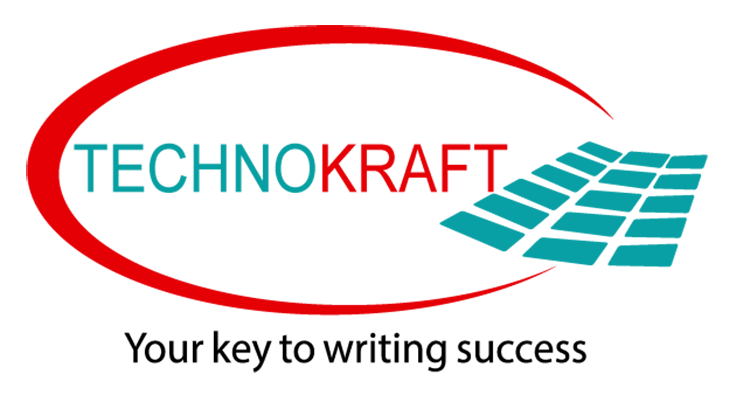
The Craft Behind Clarity: Unlocking the True Power of Technical Writing
The Craft Behind Clarity: Unlocking the True Power of Technical Writing
Clear communication drives every successful product, process, and technology today. Yet many people underestimate the precision and creativity required to explain complex ideas in simple terms. This is where Technical Writing Craft Clarity becomes essential. It bridges the gap between experts and users, transforming complicated information into meaningful and actionable content. Whether it is software documentation, process manuals, engineering guides, or training materials, strong technical writing empowers readers with clarity and confidence.

This blog explores the deeper craft behind technical writing. You will learn how it shapes user experience, supports organizational growth, and improves knowledge sharing. Each section breaks down practical insights, best practices, and key strategies that help writers create clear, structured, and user-friendly content. By the end, you will see technical writing not just as a skill but as a powerful communication tool that makes information accessible and useful.
1. The Real Purpose of Technical Writing: Communicating Complexity with Simplicity
The core purpose of Technical Writing Craft Clarity is to deliver complex information in the simplest possible form. It is not about using heavy jargon or long explanations. Instead, the goal is clarity. Most readers turn to technical documents because they need quick understanding or step-by-step support. Technical writing achieves this by organizing information logically, choosing simple language, and eliminating confusing details.
Moreover, technical writing supports decision-making. When teams depend on accurate data, any unclear instruction can slow down productivity. For example, in engineering or IT environments, a poorly written guide can lead to errors, delays, or safety risks. Therefore, technical writing must stay precise.
Another important purpose is consistency. When businesses grow, their processes and tools must stay documented in a standard format. Technical writing maintains this uniformity across all documents, manuals, and training resources. Thus, it becomes the backbone of long-term knowledge management.
Finally, technical writing improves customer satisfaction. When users understand a product quickly, they enjoy better experiences, fewer errors, and smoother workflows. Good content reduces frustration and boosts user trust. As a result, technical writing is not just a support function—it becomes a strategic asset.
2. Essential Skills Every Technical Writer Must Master
Technical writing may look simple on the surface, but it requires a powerful mix of skills. First, a writer must understand the subject. This does not mean they must be deep technical experts. However, they must understand how the system, process, or tool works. Without this basic knowledge, it becomes difficult to explain anything clearly.
Second, strong organization is essential. Technical documents succeed when information flows in the right order. Writers must structure content using headings, bullets, diagrams, and tables. Each section must guide readers toward the next step. When structure is strong, readers gain confidence and understand instructions quickly.
Third, precision is key. Every word must serve a purpose. Technical writing avoids vague sentences. It uses direct statements, action verbs, and clear instructions. This helps readers follow procedures without confusion. Even small errors in instructions can cause problems.
Fourth, adaptability matters. Technology changes fast. New tools, new interfaces, and new processes appear often. Therefore, technical writers must stay updated. They should learn new writing tools, formatting techniques, and documentation styles. They must also adapt their writing style based on the audience—beginners, experts, or non-technical users.
Finally, collaboration strengthens the final output. Technical writers often work with engineers, designers, developers, and product managers. They ask questions, validate information, and check accuracy. This teamwork ensures the content stays correct and relevant. Therefore, communication and research skills are just as important as writing skills.
3. Structuring Content for Maximum Clarity and User Experience
A strong structure sets the foundation for effective technical writing. Readers should not struggle to find what they need. That is why content must follow a clear layout. Most documents begin with an overview, followed by detailed instructions, examples, and conclusions. This helps users understand information step-by-step.
Headings play a vital role. They break long content into digestible parts. Readers can skim through the document and jump to the section they need. This saves time and ensures ease of use. Subheadings also help organize ideas logically and prevent confusion.
Lists and bullet points improve readability. They extract key steps or features from long paragraphs. For example, installation steps or troubleshooting processes become easier when placed in bullets. This structure reduces cognitive load and keeps readers engaged.
Visuals enhance understanding. Diagrams, flow charts, screenshots, and tables simplify complex concepts. When visuals accompany text, users understand instructions faster. However, visuals must stay relevant. A cluttered or unnecessary image can distract readers.
Transitions also matter. Words like “next,” “however,” “therefore,” or “in addition” guide readers smoothly through the content. When transitions are clear, the document feels connected. As a result, users follow the flow naturally.
Lastly, consistency in tone and formatting builds trust. Fonts, spacing, terminology, and styling must follow one standard. This consistency helps brands maintain a professional image and strengthens the usability of all documents.
4. Using Tools and Technology to Enhance Technical Writing Quality
Modern technical writing is supported by a wide range of tools that improve quality and efficiency. Writers no longer depend on plain word processors. Instead, they use documentation platforms, templates, and content management systems.
Tools like Markdown editors, XML-based systems, and documentation generators help maintain structure. They also make publishing faster. Version control tools help writers manage updates and track changes. This is useful in environments where documents evolve constantly.
Technical writers also use grammar and clarity tools to polish the content. These tools ensure the writing stays precise, free from errors, and easy to understand. They support the writer in maintaining tone, consistency, and readability.
Another important area is collaboration. Platforms like Confluence, Notion, or Google Workspace allow teams to work together in real time. Writers can collect inputs from engineers, designers, and product teams without delays. This improves accuracy and reduces errors.
Multimedia tools help create diagrams, workflows, and interactive visuals. These visuals strengthen the document and improve comprehension. As technology grows, writers must stay familiar with new tools. Learning these platforms increases productivity and builds stronger documentation.
Finally, search optimization plays a major role in digital documentation. When documents appear online, they must be searchable. Writers use keywords, meta descriptions, and structured formats to improve discoverability. This ensures users find information quickly when they need it.
5. The Impact of Good Technical Writing on Businesses and Users
Good technical writing influences multiple areas of a business. First, it reduces support requests. When users understand products well, they rarely call customer service for help. This saves time and reduces costs for the company. It also improves user satisfaction.
Second, strong documentation accelerates employee training. New team members learn processes faster when they have clear manuals. This increases productivity and reduces errors. In industries like manufacturing, IT, and healthcare, accurate documentation ensures safety and success.
Third, technical writing supports compliance. Many industries require clear documentation to meet regulations. Proper instructions, safety guidelines, and checklists ensure organizations follow the law. Good documentation protects both employees and customers.
Fourth, it improves product adoption. When users understand how to use a product, adoption rates grow. Clear onboarding guides, FAQs, and help articles create smooth user journeys. This leads to stronger customer loyalty.
Fifth, technical writing supports innovation. When knowledge is documented well, teams collaborate better. They build improvements, design solutions, and refine workflows. Strong documentation becomes a foundation for continuous progress.
In short, technical writing is not just about writing manuals. It is about shaping user experience, building trust, and driving long-term growth.
Conclusion
Technical Writing Craft Clarity is more than a writing skill. It is a craft that blends clarity, structure, and strategy to help people understand complex topics with ease. In a world filled with technology and fast-changing processes, strong documentation becomes essential. It supports users, strengthens businesses, and improves communication across teams. Writers who master technical writing not only create documents—they create experiences that guide, educate, and empower readers. As technology continues to evolve, the importance of technical writing will only grow, making it one of the most valuable skills in the modern world.
